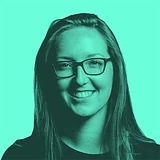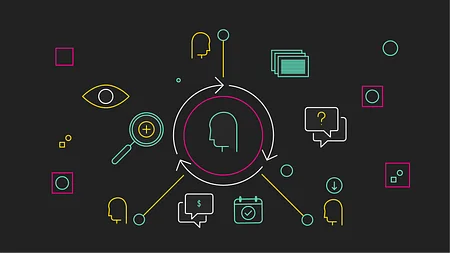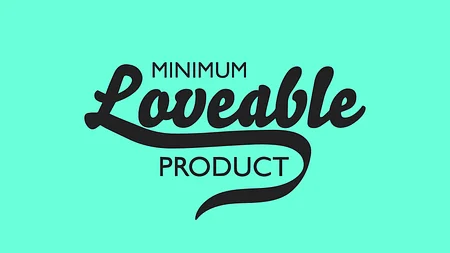Sunshine, butterflies and eradicating ‘lift and shift’

I’ll be honest when I joined 11:FS I didn’t really expect to end up in West Africa. But on reflection, that was pretty short-sighted. We create truly digital ventures for the good of people everywhere, and we mean everywhere.
How? We apply Jobs To Be Done (JTBD) theory to get under the skin of how each market works. More importantly, it helps us discover what customers there are really trying to get done and build an end-to-end experience that solves for the local nuances holding them back.
2019 has given us some incredible opportunities to partner with banks in up and coming markets and build fascinating new propositions. As part of the Jobs To Be Done team here at 11:FS, that means the chance to talk to customers tackling a different day to day financial reality. And for the partnerships we forge, it’s the chance to find a fix that makes a genuinely massive difference to customers, arguably at far greater scale than in developed markets. So far, pretty win-win.
But without a doubt, new markets bring new challenges. I’m not talking about lazy product name checks and marketing mishaps - although who doesn’t enjoy anecdotes like Pepsi unintentionally promising Chinese consumers that “Pepsi brings your ancestors back from the grave”?
The far bigger challenge is finding a way to design and launch new products in new geographies with purpose and at pace. Offering a genuine alternative to ‘lift and shift’ - i.e. taking pre-existing and pre-packaged solutions, dropping them into new markets with limited real understanding of what customers there are actually looking for, and hoping it works out.
A lot of well-intentioned teams have been burnt by having to try and find product-market fit for a solution that was designed elsewhere. Step into a market where much of the key architecture of your sector is different and the challenge becomes even more daunting.
Jobs to be done can help
For the uninitiated, JTBD is a theory that breaks down the underlying motivations behind customer behaviours and choices. People are focused on making progress on important areas in their personal or professional lives, the jobs they want to get done. Products and services are simply the tools that they ‘hire’ to make that happen.
At 11:FS, JTBD sits at the heart of our work to build user-focused and truly digital propositions. It gives our propositions purpose. Designing stuff that people love starts with understanding the areas where your potential customers most want to make progress, and the barriers that stand in their path.
This is where the research methodology you pick is key. JTBD isn’t used to ‘walk in their shoes’, but to build a truly accurate, pragmatic and non-patronising picture of what they are trying to achieve and the practical constraints that hold them back.
Building that picture means talking to people one-on-one, having a detailed and flexible conversation that is led by the customer. You won’t get that by cramming multiple people into a focus group, where you can only skim the surface with each person there. And you won’t get it by asking people to work through a list of predetermined options in a quantitative survey, options that in all honesty probably just reflect the assumptions that you took in at the start. You need to invest the time (and often the money) to talk to people individually if you want to really take a Jobs To Be Done approach.
This is crucial wherever we go, but perhaps even more so in emerging markets. We speak to customers without asking them what they want or focusing on how they feel about existing products or technologies. Our in-depth interviews ensure that our teams are mindful of what is practically possible, but aren’t simply trying to patch or tweak what already exists somewhere else. Our objective is to identify the essential jobs that customers want to get done that are currently underserved and build propositions from the ground up that tackle them directly.
A key criterion for being a customer lead is curiosity without bounds; if I can find an excuse to talk to people in Antarctica then I’ll have ticked all of the continents off my research to-do list. One of the questions I’m therefore often asked is how much commonality I see in the jobs that customers have across different markets. Since moving to 11:FS alone, I’ve had the privilege of hearing people across three continents open up about how money and financial services connect to their lives.
Hunting for purpose
On the surface, the conversations have been poles apart. I’ve moved from speaking to people juggling absurd numbers of different credit cards and rewards schemes, to people whose entire financial lives are based around cash. The practical ways that people interact with money are fascinatingly diverse.
But when you dig into the jobs sitting beneath these different behaviours then - at a high level - some of the same patterns do emerge. What makes each market fundamentally different are how jobs are prioritised and the nuanced details of the constraints currently stopping people from making progress. Connecting the progress people most want to make with a roadmap of focused actions to tackle the specific blockers in their way is what gives our propositions purpose. Plus, it ensures our propositions are relevant in the markets they need to live and breathe in.
It’s not all sunshine and butterflies. As a customer and product researcher, I’m all too aware that purpose-hunting can draw you in. There is sadly no magic number of interviews that you can reach and know with absolute certainty that you’ve done enough. It’s easy for projects to almost unwittingly channel all their momentum into discovery. And that temptation is even more understandable when teams are attempting to navigate a new geography alongside a new problem space. There are so many questions to answer.
But converting customer jobs into meaningful propositions that launch at the right moment requires you to move at pace. And that means accepting that you won’t be able to know everything you need to know upfront, and making adjustments to mitigate that.
Once we’ve identified the areas where we believe there’s the most opportunity to deliver real value to consumers, the priority is to get a version of that into the hands of customers as quickly as possible. Being able to draw on in-depth examples of what’s already in the market (courtesy of 11:FS Pulse) helps to borrow what is superfluous and focus new development in on what really matters.
At this stage we’re not focused on a finished product, we want to check our core hypotheses resonate, to identify the inevitable shortcomings and to then hopefully go away and fix them. And if (or more likely when) that gets uncomfortable, I try to keep Reid Hoffman in mind.
If you are not embarrassed by the first version of your product, you've launched too late
Reid Hoffman, entrepreneur, venture capitalist and author
Moving at pace is only possible with small core teams of talented specialists, capable of making decisions and set up with the remit to tap into a wider network of experts with shameless abandon.
At 11:FS we have experts who know the local market inside out, but there is also a huge wealth of knowledge that we can leverage within the organisations we partner with. Connecting those experts directly to the problems that customers are experiencing, and ensuring that the jobs they are trying to get done remain entrenched in what we build, is vital. They’re the foundations required to build something awesome. I just can’t tell you about it yet.
If you’re interested in finding out more about our approach to venture building you can check out my colleague Ryan Garner’s article.




